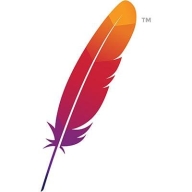

Red Hat JBoss Enterprise Application Platform (EAP) and Tomcat compete in the Java-based application server market with distinct approaches. JBoss has the upper hand for enterprises focused on scalability and comprehensive support, while Tomcat offers simplicity and cost-efficiency for straightforward applications.
Features: JBoss EAP provides advanced J2EE features, scalability, and vendor support, making it robust for enterprise deployments with stability and platform compatibility. It ensures high availability and seamless deployment across environments. Tomcat, meanwhile, is favored for simplicity and ease of use, offering excellent performance for lightweight servlet hosting. It is resource-efficient and supports rapid deployment but offers less scalability than JBoss for heavier applications.
Room for Improvement: JBoss could enhance its offering by improving logging features, documentation, extending cloud capabilities, and modernizing integrations. Tomcat could benefit from better high availability, enhanced clustering, and streamlined configuration management. Users also note areas for improvement in Tomcat's security features and administrative tools.
Ease of Deployment and Customer Service: JBoss and Tomcat both offer flexible deployment across on-premises, hybrid, and cloud environments. JBoss is recognized for comprehensive technical support and a dependable service team, while Tomcat relies on a strong community and extensive documentation for user-driven support, making it more suitable for organizations with in-house expertise.
Pricing and ROI: JBoss presents a cost-efficient solution with a higher upfront cost that is offset by a strong ROI through reduced downtime and improved stability. Unlike proprietary solutions, Tomcat offers an open-source, cost-free model providing high-value for basic needs without licensing overheads, although enterprise-level support may incur additional costs.
This flexibility translates to a lower total cost of ownership.
We receive support from RDS and Red Hat, and the response time and quality meet our expectations.
Users can find discussions about common problems, solutions, and documentation within the community.
They are proactive in looking into the tickets we create in case we have unresolved queries.
It is quite stable for our needs.
Making it lighter and more modular would probably be beneficial.
I would like to see improved booting of applications altogether on one page to manage all data instances from one location, similar to an AWS console.
Tomcat needs a more robust logging error details feature; the current logging feature is available, but it should be more user-friendly.
JBoss is the cheaper option out of the three when compared to WebSphere and WebLogic.
The price is somewhat high for an enterprise, however, it depends on organizational negotiations.
Built-in metrics and subsystem isolation, where every subsystem logging, messaging, or web services can be tuned independently, provide fine-grained control over performance and behavior.
It allows for simple modification of applications and provides better clustering capabilities.
JBoss is more flexible and keeps up with modern technologies, supporting newer versions of different libraries.
The advantages of Tomcat include its flexibility; we can increase the heap memory and the size of sessions as per our custom needs.
| Product | Market Share (%) |
|---|---|
| Tomcat | 15.5% |
| Red Hat JBoss Enterprise Application Platform (EAP) | 15.1% |
| Other | 69.4% |


| Company Size | Count |
|---|---|
| Small Business | 9 |
| Midsize Enterprise | 2 |
| Large Enterprise | 17 |
| Company Size | Count |
|---|---|
| Small Business | 22 |
| Midsize Enterprise | 4 |
| Large Enterprise | 28 |
Red Hat JBoss Enterprise Application Platform (EAP) provides scalable, secure, and reliable infrastructure for Java applications, offering high availability, modular architecture, and smooth integration with new technologies.
Red Hat JBoss Enterprise Application Platform (EAP) is tailored for deploying and managing web and application servers, with a strong focus on Java applications, APIs, and core business systems. It ensures easy setup and cost-effectiveness, accommodating high availability and clustering enhancements like session replication via Infinispan. While managing configurations and deployments effectively, EAP facilitates flexible deployment modes and enhanced security using OpenID Connect. However, areas needing improvement include customization options, runtime diagnostics, integration capabilities, documentation, and technical support. Automation needs expansion, pricing options could be more competitive, and better alignment with Jakarta EE is suggested for modernization.
What are the standout features of Red Hat JBoss EAP?Red Hat JBoss Enterprise Application Platform (EAP) finds application across industries such as finance, web development, and enterprise middleware services. Its capabilities are demonstrated in managing banking transactions, supporting legacy systems, integrating with external APIs, and fulfilling enterprise needs in installation, configuration, automation, and security tasks.
Tomcat is a reliable and efficient web server, popular for hosting and running Java-based applications. It is praised for its scalability, compatibility with different operating systems and development frameworks, and its ability to handle heavy workloads.
Users appreciate Tomcat's ease of use, robust performance, reliable server functionality, seamless integration with various platforms, extensive documentation, and strong community support.
We monitor all Application Server reviews to prevent fraudulent reviews and keep review quality high. We do not post reviews by company employees or direct competitors. We validate each review for authenticity via cross-reference with LinkedIn, and personal follow-up with the reviewer when necessary.